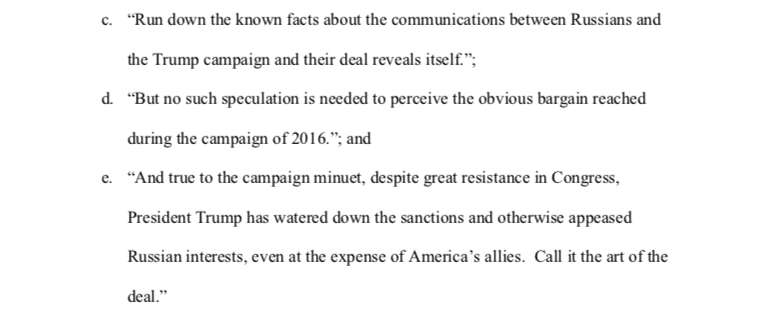
It’s weird seeing your immediate neighborhood at the top of the news in a doom and gloom sorta way. You don’t really want to be trending on social media due to an illness.
It makes me think of a Twighlight Zone opening:
It is the middle ground between light and shadow, between science and superstition, and it lies between the pit of man’s fears and the summit of his knowledge. This is the dimension of imagination. It is an area which we call the Twilight Zone.
Some of us in New Rochelle, NY have been designated a “Containment Zone,” decreed by Gov. Andrew Cuomo, with the National Guard coming in. The day before he called us a Hot Spot, which I thought was a whole lot sexier and “I’m a Hot Spot” t-shirts would have been great. If not for that whole illness and death thing.

I’m essentially the center of the bulls-eye on the map with the circle around it, so I wanted to…
Oh my god you’re sick!!!
Ugh, who let you in here? And no, but thanks for kinda, sorta, almost askin’. I mean, there’s a good chance I will be in the next year or two, but that’s the same risk for everyone else in the country world. For the sake of our healthcare folks, let’s hope it doesn’t all happen at once.
So with the National Guard, that means you’re under military rule!?
Not exactly, and when I say not exactly I really mean absolutely not. The National Guard, which isn’t here yet, will be used to clean the schools that have been closed and get food to some people.
Are there guns all over the place? I bet there will be guns. Lotsa guns. And ammo. And tanks. And more guns!
Cool your jets. The Guard is not coming for military or police functions. It’s a straightforward manpower issue. We’ve only got so many hands on deck and simply need more.
How boring! OK, tell me all about the food shortages! Are folks fighting in the stores over the scraps? There must be fighting!
I’ve been to three different markets over the last week. The shelves are full. Grocery store traffic is normal. I’ve no fight videos to share. But there are hand sanitizers or wipes at the entrances.
So what the hell is different?!
Glad you asked, even if you did invite yourself in. Not too much. People try not to use the hand rails for the stairs. And at the train station folks will hold the station house doors open for others with their elbows.
That ain’t what I meant.
OK. The trains into the city are about ⅓ emptier as they leave New Rochelle because many folks in my neighborhood have been quarantined for the last week.
But outsiders reacted differently when the initial people got sick. The reaction of outsiders is vaguely reminiscent of the September 11th aftermath when some folks living in the back of beyond thought terrorists were coming for them and they needed tanks. And as bad as it was for many people locally, New Yorkers simply adapted. We even ran a marathon while the World Trade Center was still burning.

But I saw the screaming headlines! Like this one from the Daily News!
Yeah, well, they probably got tired of running Trump-Is-Clueless headlines and they gotta sell papers, you know?
[Yawn] So, anyway, the whole city is under quarantine now, right? Shut! Containment! Exclusion!
No. The city is not shut, regardless of what the Daily News screams at you. The containment refers to prohibiting large gatherings like in schools or worship houses in the area where people got sick. But people are free to come and go as they please if they are not part of the 1.5% of the population that was quarantined. It is neither an exclusion nor a quarantine zone. Perhaps Cuomo should have called it a “support zone” to refer to the National Guard helpers coming in, but I guess that ship has sailed.
OK, you can leave if you are not one of the quarantined ones, so tell me about the nightmare of disease on those rolling petri dish commuter trains into the city!!
Well, I drive to the station and take a seat on the train, most of which are new. No need to touch anything if I have a seat, and I almost always have a seat — even before the virus. It’s a relaxing 30-minute ride into Grand Central. The only thing I need to touch is my phone, since it’s an e-ticket.
So anyone working in midtown can easily go from their car to their office without touching anything until they get to their building. Subways are another matter, but that’s a NYC issue.
You know, this is really boring. Someplace there must be fire and brimstone coming down from the skies! Rivers and seas boiling! Cats and dogs living together! Mass hysteria!

Yeah. Sorry. But it just ain’t like that. In some places people will be sick, but I haven’t even heard a cough on the train. The only thing you’ll see are news trucks parked in front of City Hall and maybe a photographer at the train station, all looking for something, anything, to shoot.
In the end, this will still be New Rochelle. Norman Rockwell once lived here. Also Rob and Laura Petrie. The city now has a population of about 80,000 and growing with tons of downtown development. [Addendum: Cool interactive map.]
OK, now you’re just being a civic booster.
Who? Me? Actually, I tell you that because I don’t have much to work with here, OK? Life doesn’t really look any different for most. I saw a bunch of deer when I went for a trail run yesterday, does that help? And I heard coyotes last night.
OK, I got one for you — the politicians must be screwing this up big time! I mean, really, really big time!! Bigly!
A viral emergency is like a snow emergency for a politician. If you handle it well, few will notice. But if you screw it up you lose your job.
You know who knows that well? The Cuomo family growing up in Queens where the streets didn’t always get plowed. So Governor Andy has been all over this emergency giving extensive press conferences and showing a command of the facts. So too for New Rochelle’s Mayor Noam Bramson and Westchester County Executive George Latimer.
When people have a command of the facts you tend to trust them more when they give advice on what to do, or not to do.
Those guys are policy wonks. They dive into the material and know they damn well better be candid because there is comfort in knowledge and anxiety in secrecy. Yes, the illness is very important, but mostly so that people in the sweet part of life, who might get only a little sick because of younger and healthier lungs, don’t inadvertently pass it on to vulnerable populations.
Oftentimes people only mention politicians when bad stuff happens. But Cuomo, Latimer and Bramson all deserve much praise for doing as well as they can under exceptionally difficult circumstances.
New Rochelle is like a canary in the coal mine as they experiment, in conjunction with the Centers for Disease Control, to see what will slow down the viral spread so that hospitals aren’t inundated all at once. If 2% need hospitalization, that’s still 1,600 hospital beds for an 80,000-person city.
You mentioned the Mayor. And the County Executive. And the Governor. Any other political chief executive you want to give accolades to?
Finally. I get to answer your question with one of my own. Do you know of a national level chief executive that is a policy wonk with a command of the facts?






